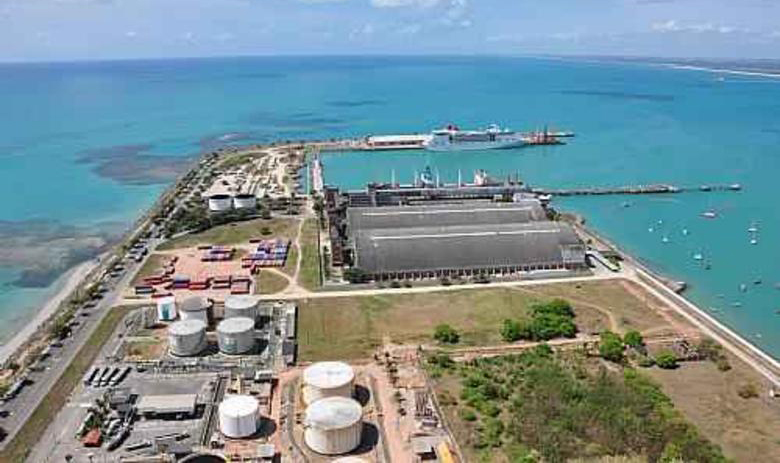The Port of Maceió is located in the municipality of the same name, the capital of Alagoas, on the shores of the Atlantic Ocean, between the beaches of Pajuçara and Jaraguá. The port is managed by the Port of Maceió (APMC), which is linked to the Company of Rio Grande do Norte Docks (CODERN).
Historical Facts
In the seventeenth century, beginning of Portuguese colonization, Portuguese ships moored where today is located the Jaragua district of the port, where they were loaded woods of the coastal forests. The port also served later for the shipment of sugar produced by local mills. Before its founding in 1609, Manoel Antonio Duro lived in what is now the Pajuçara neighborhood, receiving the Captain-General of St. Mary Magdalene, Diego Soares, a esmaria.
Later, in 1673, the land changed owner. The king of Portugal determined, the Viscount of Barbacena, the construction of a fort in the neighborhood of Jaragua. Thus, there was a great development in the region and the small village received a small chapel dedicated to Our Lady of Pleasures, now patron of the city.
The village of Maceio was spun off on December 5, 1815 the then village of St. Mary Magdalene South Alagoa, or simply Vila Alagoas, current city of Marechal Deodoro. On December 9, 1839, there was the elevation to city status, mainly because of the arising development of the operation of the port of Jaragua, a natural port that facilitated the berthing of vessels, where they were exported sugar, tobacco, coconut and spices.
The forecast improvements in the harbor of the city of Maceio date of 1875. In 1896, the company The National Harbour Company Ltd. obtained the concession for the Port in permissive of Imperial Law No. 1,746, of October 13, 1869, but failed to make certain works, and the contract terminated in 1905 by the Federal Government.
From 1910, new studies were prepared, but for financial reasons it was not possible to continue the development of Maceio Port facilities. By Decree No. 23469 of November 16, 1933, the Union authorized the government of the State of Alagoas build and commercially exploit the Port. In 1935 had commenced implementation of the current project, in charge of the General Company of Works and Construction S.A. -. Geobra, taking place the inauguration of the Port of Maceió, on October 20, 1940.
However, operations only came to officially begin on January 23, 1942, when the first shipment of sugar. On 9 August 1963, the Decree was issued No. 52,345, transferring linking the Port Administration Maceio to the Federal Government, through the National Department of Ports and Waterways - DNPVN. In 1975, the Federal Government created, succeeding DNPVN the Company of Brazil Ports - PORTOBRÁS, which was liquidated in 1990, at which time the port of Maceio linked to the Company of Rio Grande do Norte Docks - CODERN through an Agreement signed with the National Transport Secretariat - SNT and the National Department of Water Transport -. DNTA
Throughout its existence, the Port of Maceió has improved its structure, from the completion of several works of expansão.Em 1974 hydraulic landfill that led to the implementation of the Sugar Terminal and the new Commercial Wharf, totaling 750 meters line pier. In 1978, the new road access, external threading and a network of electricity.
In 1989 began the construction of the tanker pier, the completion of which occurred in 1995. In 1996, the Port benefited from dredging the access channel and turning basin of Commercial Wharf.
From December 2001 until late 2011, there was the construction of Container Wharf, extending the Commercial Pier 80 meters, connected to the north end of the Sugar Terminal and forming a dársena 350 meters long.
Details
Berths:7
Source: Official website of the Port of Maceió



